Archaeology & History
Archaeologists in Armenia Just Unearthed an Ancient ‘Golden Tomb’ Filled With Jewelry and Artifacts—See the Treasures Here
It's the latest find from a joint Polish and Armenian excavation effort begun in 2013.
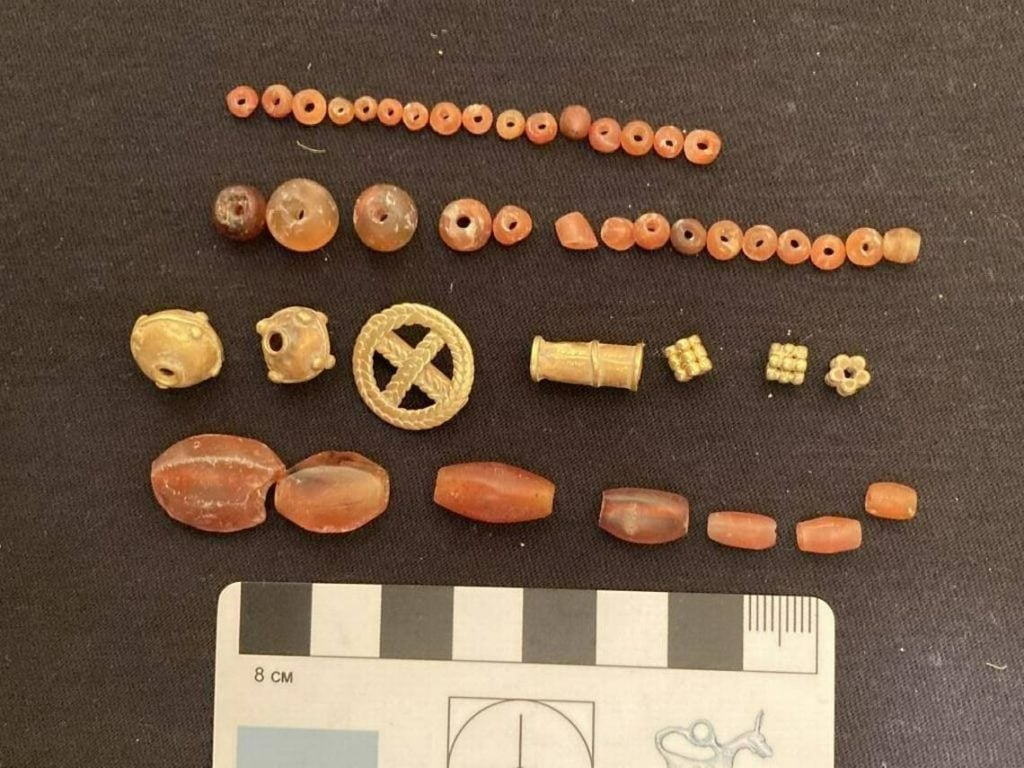
It's the latest find from a joint Polish and Armenian excavation effort begun in 2013.

Sarah Cascone

Archaeologists at Metsamor, an ancient necropolis in Armenia, have discovered a tomb filled with gold pendants and more than a hundred amber and carnelian beads. Dating to the late Bronze Age (1,300 to 1,200 B.C.E.), the grave also held the remains of a man and a woman, who appear to have be buried at the same time.
“Their death is a mystery to us, we do not know the cause, but everything indicates that they died at the same time, because there are no traces of tomb reopening,” Krzysztof Jakubiak, an archaeology professor at the University of Warsaw, said in a statement.
Laid to rest in an eternal embrace, the couple was buried in a cist, a stone-lined chamber dug into the ground. Believed to have died in their 30s, one wore bronze bracelets, the other a tin wire ring.
The grave also included a wooden burial bed, a faience flask, and about a dozen ceramic vessels. According to researchers, the beads and pendants were originally part of three necklaces, and the flask would have been imported from the Syrian-Mesopotamian borderland.
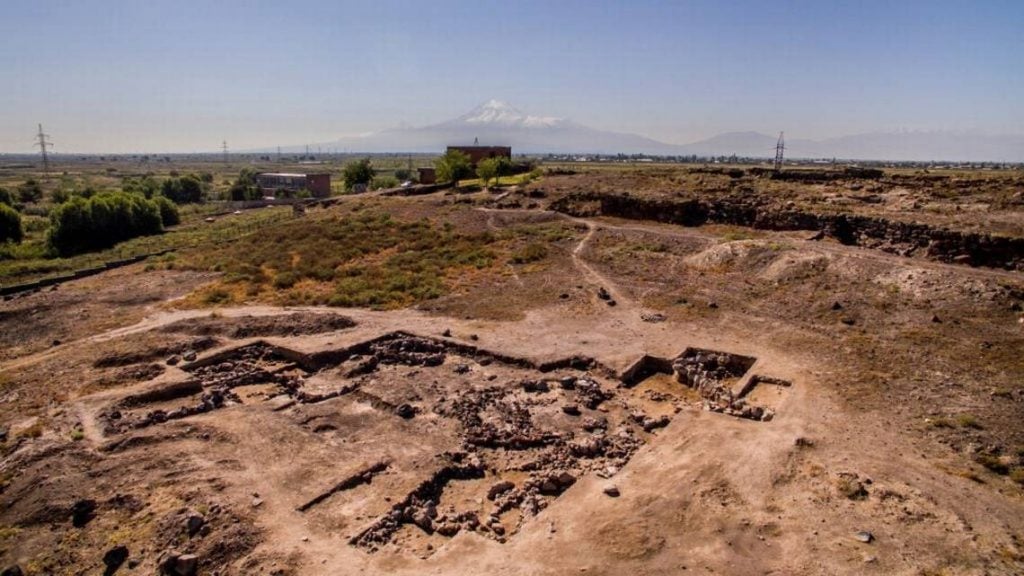
The newly discovered “golden tomb” at the Metsamor necropolis in Armenia. Photo courtesy of the Polish Center of Mediterranean Archaeology at the University of Warsaw.
The research project at the Ararack Valley is a joint effort the Polish Center of Mediterranean Archaeology at the University of Warsaw and Armenia’s Service for the Protection of Historical Environment and Cultural Museum-Reserves, led by Jakubiak and Ashot Piliposian. The partnership has been ongoing since 2013, according to the Greek publication Archaeology; an exhibition of their findings opened last fall at the Armenian History Museum in nearby Yerevan.
To date, archaeologists have discovered about 100 graves in the cemetery, but the newly found golden tomb is one of the few that were not looted prior to the start of excavations in 1965. The cist graves would have been covered with burial mounds of earth that have eroded over the centuries.
Because the ancient Armenians do not appear to have been illiterate, and left behind no written records, archaeologists know little about Metsamor society. The walled settlement was at its height from 4th to the 2nd millennium B.C.E., with temple complexes surrounding a central fortress.
“It was a very large settlement. Even fortifications made of huge stone blocks have survived to our times, encircling the so-called citadel on the hill,” Jakubiak said. “There was no other settlement in the region that could be compared in terms of importance and size.”
See more photos from the excavations and of the objects from the tomb below.
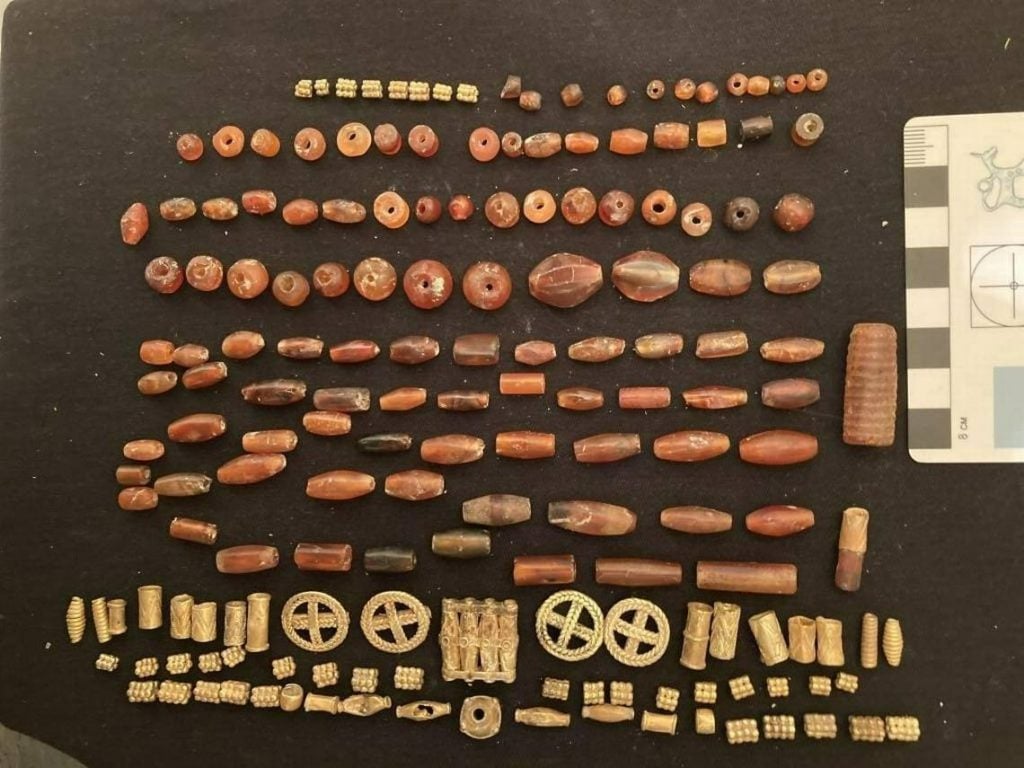
Beads and gold pendants from a recently discovered tomb at the Metsamor necropolis in Armenia. Photo courtesy of Science in Poland.
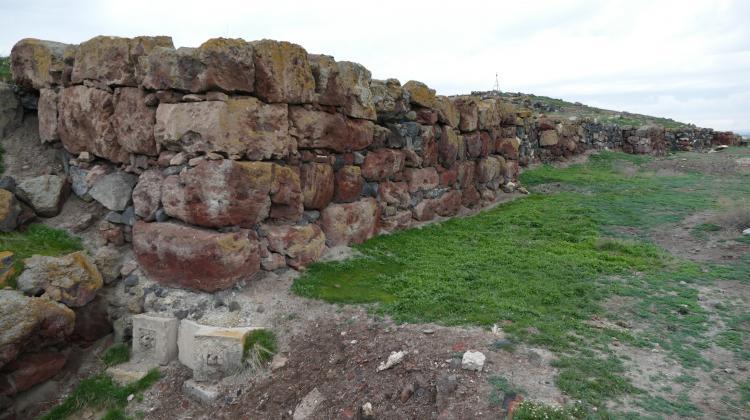
The citadel at the Metsamor necropolis in Armenia. Photo by Simon Zdziebłowski.
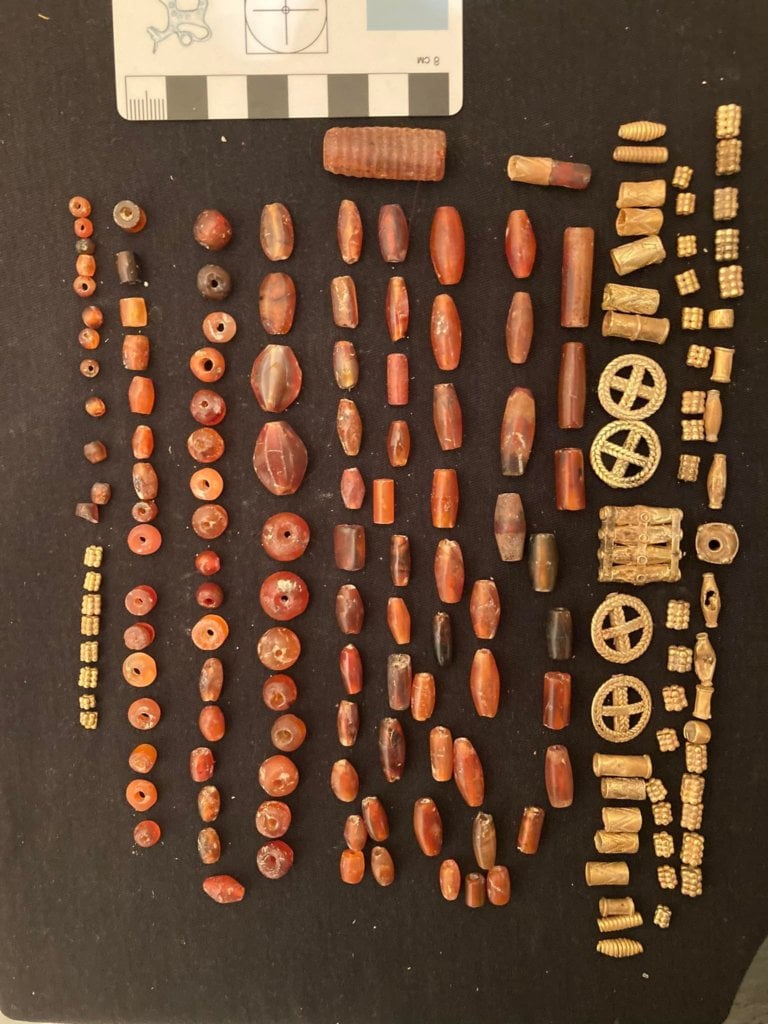
Beads and gold pendants from a recently discovered tomb at the Metsamor necropolis in Armenia. Photo courtesy of the Service for the Protection of Historical Environment and Cultural Museum-Reserves.
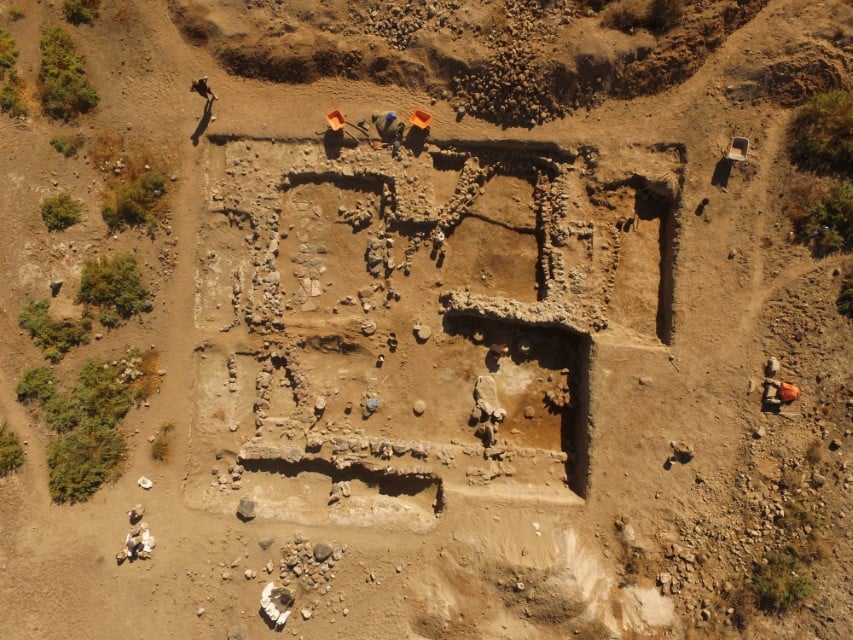
An aerial shot of excavations at the Metsamor necropolis in Armenia. Photo courtesy of the Polish Center of Mediterranean Archaeology at the University of Warsaw.
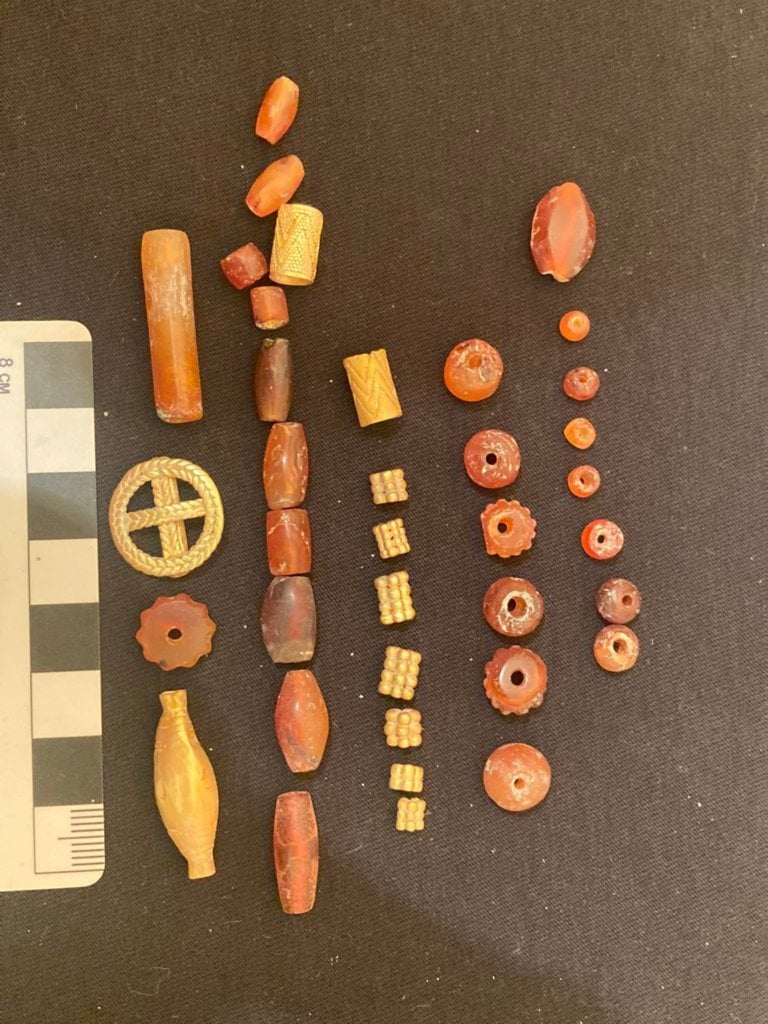
Beads and gold pendants from a recently discovered tomb at the Metsamor necropolis in Armenia. Photo courtesy of the Service for the Protection of Historical Environment and Cultural Museum-Reserves.
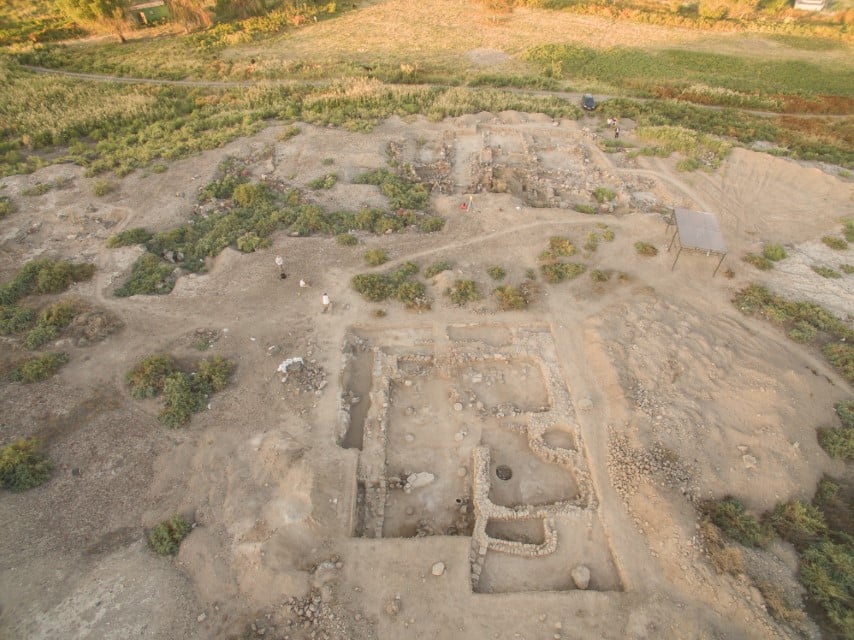
Ruins of a columned hall at the Metsamor necropolis in Armenia. Photo courtesy of the Polish Centre of Mediterranean Archaeology at the University of Warsaw.
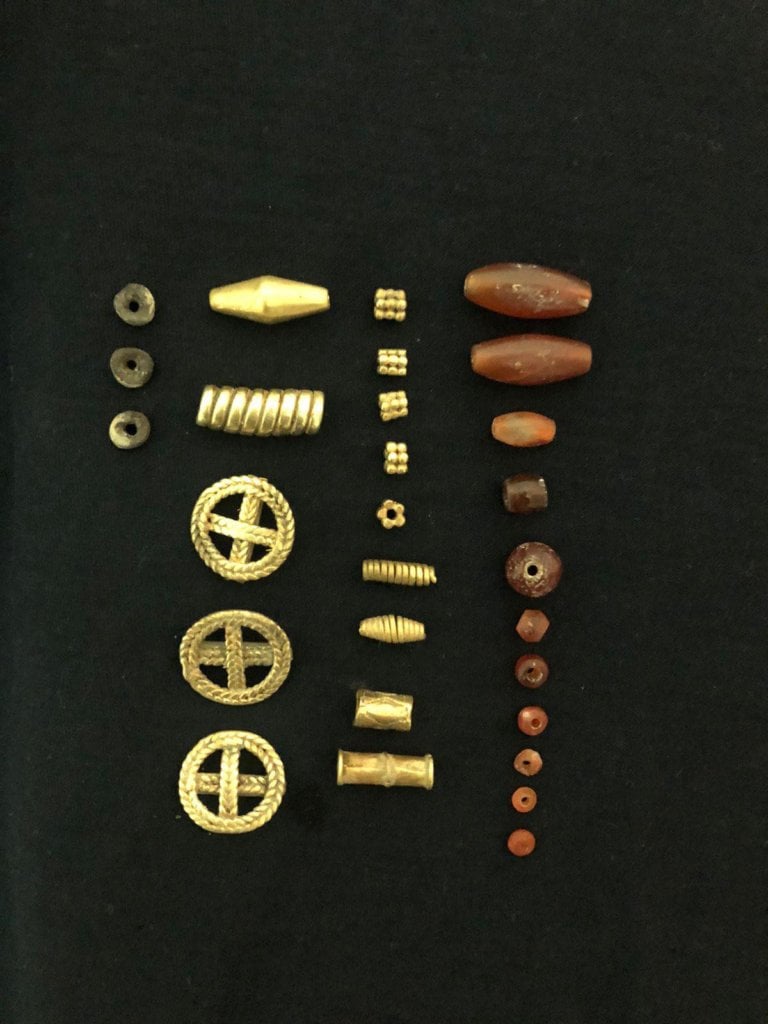
Beads and gold pendants from a recently discovered tomb at the Metsamor necropolis in Armenia. Photo courtesy of the Service for the Protection of Historical Environment and Cultural Museum-Reserves.
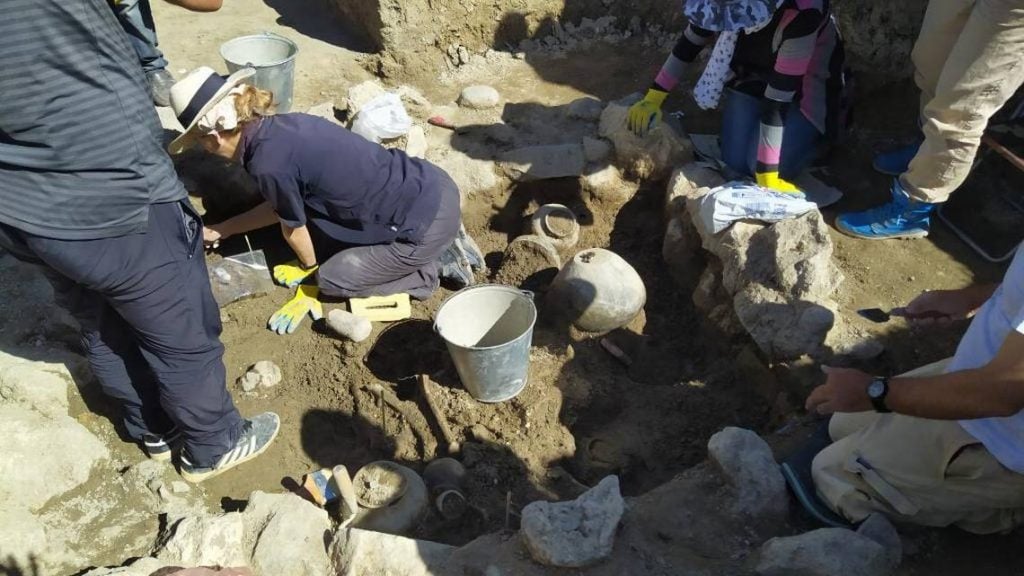
Archaeologists at work at the Metsamor necropolis in Armenia. Photo courtesy of the Polish Centre of Mediterranean Archaeology at the University of Warsaw.
More Trending Stories:
A Museum Has Located a Missing Figure That Was Cut Out of This 17th-Century Family Portrait
Ai Weiwei Has Recreated Claude Monet’s Iconic ‘Water Lilies’ Using 650,000 Multi-Colored Lego Bricks
London Will Honor the Victims of the Transatlantic Slave Trade With a New Memorial in the Docklands